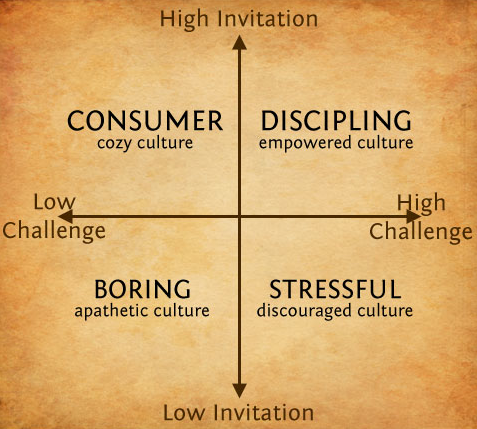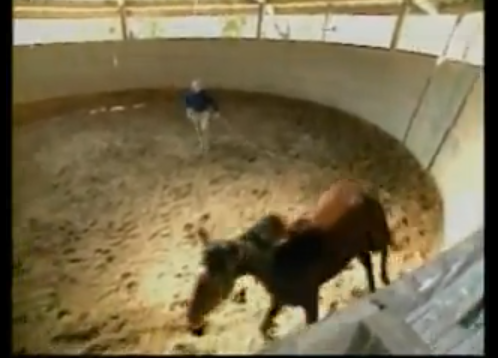
Below you will find three excerpts from posts defining the matrix and two tools for you to use. The first tool is a link to Community of Hope's Kevin Vogt who does a short leadership piece with the matrix. Finally, I have included a "must see" support video, that is an amazingly powerful illustration of invite-challenge using the training of horses as an illustration. The first time I was taught this tool, I saw the video. It will be awesome to use during a leadership training even in 2014!
DEFINITIONS
By Robert Neely on the 3dm team
Who is the best teacher you ever had? The best leader? The best mentor?
No matter whether you’re thinking about a teacher, a coach, a conductor, a parent, a youth-group leader, or some other guide in your life, chances are that the person who sprung to mind when you read those first three questions did two key things:
1) He or she gave you access to his/her knowledge, expertise, experience – and maybe even life.
2) He or she called you to be better than you were at a specific skill, talent, task – and maybe even life.
To put it another way, the best teachers and leaders and mentors both invite us and challenge us. Both are necessary to truly help a person grow.
This is true for music teachers, volleyball coaches, dance instructors, and head chefs, and it’s also true for people who disciple others to become followers of Jesus. As in all of these other areas, invitation and challenge are necessary to truly help a person become like Jesus was and to do what Jesus did.
Read more from Robert
By Ron Edmonson
Invitation - This refers to the atmosphere and degree of welcoming a church or an individual message provides. Do people enjoy being there? Do they want to come back? Is it inviting? Is a message fun to listen to? Is it encouraging and helpful?
Challenge - This refers to the degree others are encouraged to grow in their walk with Christ. Are they challenged? Are they held accountable? Are personal disciplines encouraged? Are sins exposed? Are expectations strong? The theory is that churches tend to fall into one of these four quadrants:
- Low Invitation / High Challenge – Produces a discouraged/burnout culture.
- Low Invitation / Low Challenge – Produces a bored culture.
- High Invitation / Low Challenge – Produces a cozy/chaplaincy culture.
- High Invitation / High Challenge – Produces a discipling culture.
Read more for Ron
By Ben Sternke
Invitation refers to an attitude that says, “I’m glad you are here, I’m committed to you and will welcome you no matter what.” Challenge refers to an attitude that says, “I want you to grow, I’m committed to holding you accountable to change for the better.”
People are used to experiencing cultures that are either highly invitational or highly challenging, but typically they don’t ever experience them together. Left to our own devices as leaders, we tend to either create cultures that are “high invitation/low challenge” (cozy, consumer) or “high challenge/low invitation” (stressed/discouraged), or perhaps we swing between the two, unsure of how to actually bring both at the same time.
Read more from Ben
LEADERSHIP TRAINING EXAMPLE Video Link

MUST SEE SUPPORT VIDEO link
This is fairly self explanatory. The trainer is the video is modeling a way to "break a horse" that is not customary. It has been the custom for years to use physical force or overly harsh methods to train. But Monty (the trainer) studied how horses naturally get assimilated or adopted by another family of horses. He then adapts the technique as a human. The technique beautifully illustrates the back-and-forth nature of invitation and challenge in the breaking process.

